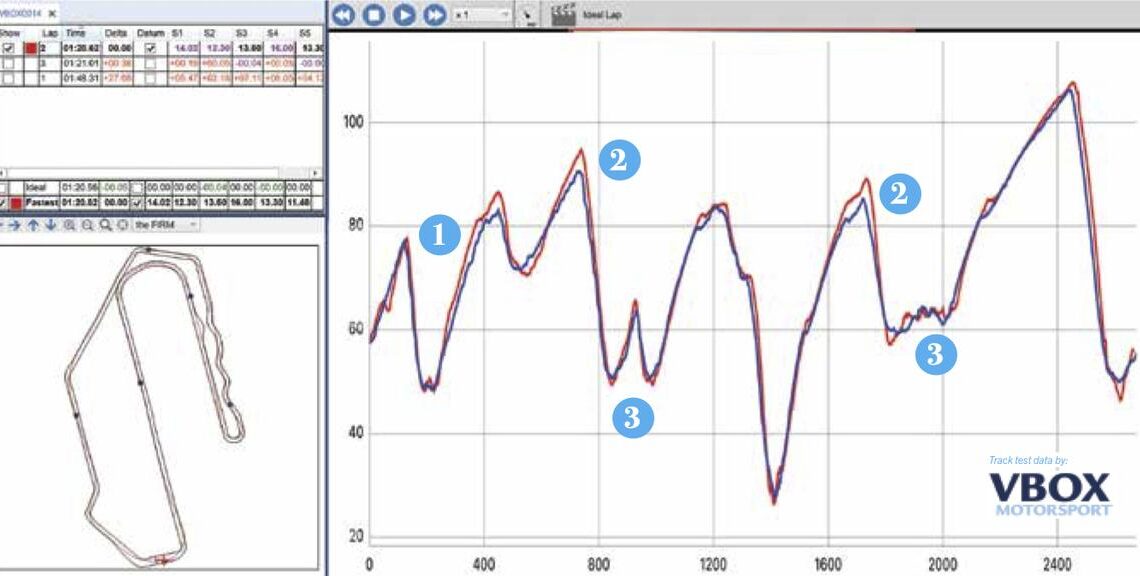Don’t flip ahead. We know you really just want to jump to the lap time on the newest Honda Civic Type R, but trust us: Take the ride first.
Yeah, lap times are important and, in the case of the most recent iteration of the hottest Civic, impressive, but they don’t tell the whole story. So before you peek at the …
It’s Fast, Right?
Okay, you’ve listened long enough, so let’s get to the track time. That’s what you want, right? Yeah, it’s fast. Real fast.
In fact, the 1:20.62 lap time around the Florida International Rally & Motorsport Park, our official test track, firmly put it at the top of the “hot hatch” pile, threatening to knock on the door of the legitimate sports car club.
That time is more than a second faster than the bulk of its competition, including the Toyota GR Corolla, the Hyundai N models and, yes, the previous FK8 Civic Type R. The Volkswagen Golf R comes closest on the lap chart–still six-tenths behind the new Type R, though, and greatly assisted by its prodigious all-wheel-drive thrust and powerful turbocharged engine.
As we’re always quick to point out, though, lap times don’t tell the whole story. And oddly enough, our VBox data doesn’t fill in the entire narrative in this case, either, because the true surprise of the new Civic Type R is the feel on track.
1. The red speed trace follows the current Type R around our test track, while the blue one logs the previous model. It’s pretty apparent in this third-gear acceleration zone that the newer car is leveraging its additional rated horsepower and turning it into more thrust through that gear. 2. The latest Type R also has a fractionally longer wheelbase, which could be part of this more aggressive braking trace. The newer car loses speed at a greater rate than the old car, as evidenced by the steeper descending speed trace. 3. Speed through corners is close enough that we’ll call it a tie. The older car is even marginally faster across a couple apexes. At any rate, it’s giving up very little absolute grip to its replacement, even if the new car feels more stable generating that grip.
As we alluded to before, all four tires are deeply involved in the effort here, which means less relative work being done by the fronts. And that means less understeer, better response and simply less work to be done to get the most potential out of the…
Click Here to Read the Full Original Article at Grassroots Motorsports Online Articles…

